Highlights of the Galleries Tour in Sign Language
Watch Actor and Comedian, CJ Jones, as he takes you on a tour of Penn Museum's Galleries. Learn about some of the most important objects on display at the Museum.
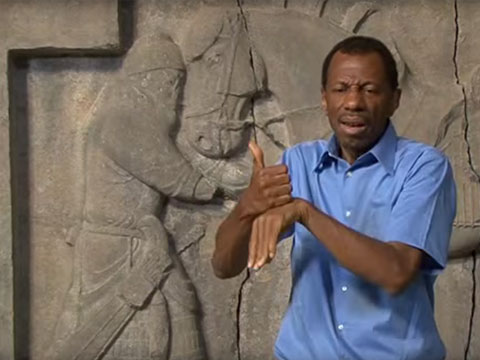
Length: 03:02
The Tang Horses
Emperor Taizong's Horses, China, Zhaoling, Shaanxi province, Tang Period (circa 636-649 AD), Stone, H. 169, Penn Museum Object C395....
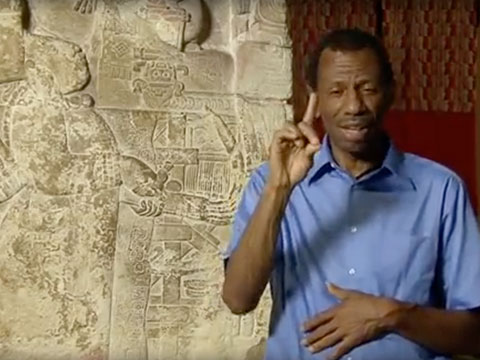
Length: 01:36
Stela 14 from Guatemala (758 CE)
Stela 14, Piedras Negras, Central Lowlands, Guatemala; Classic Maya, 758 CE, (Limestone; Loan from the Government of Guatemala)....
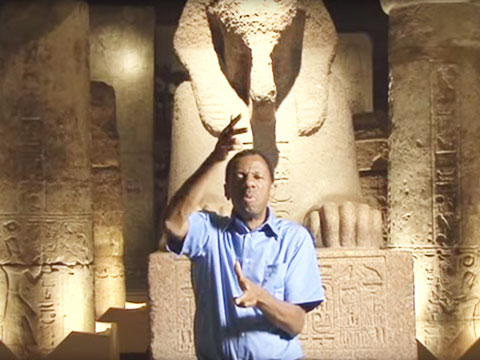
Length: 04:01
The Sphinx
Sphinx, Memphis (Palace of Merenptah), Dynasty 19, Reigns of Ramses II-Merenptah (1279-1204 BCE), Red Granite. Penn Museum Object E12326....
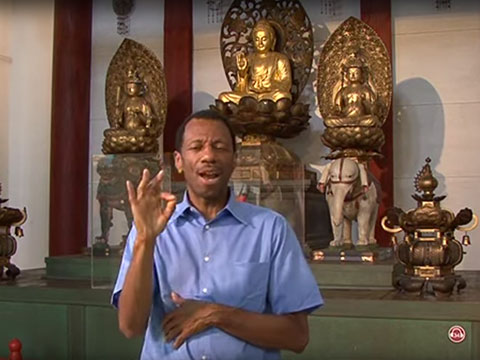
Length: 01:56
The Shingon Altar
The Shingon altar is composed of pieces from a larger Japanese Temple put together by Maxwell Sommerville in 1899....
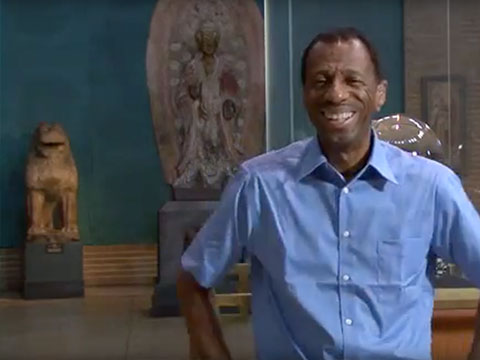
Length: 01:16
China
The Chinese Rotunda is the majestic setting of the Museum's Chinese collection. Ninety feet in diameter and soaring ninety feet high, the rotunda is one of the largest unsupported masonry domes in the United States, housing one of the finest collecti...
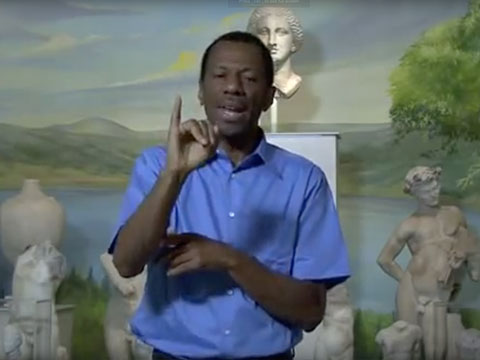
Length: 01:40
Rome
The Romans traced their mythical beginnings to the Trojan War and to Romulus, who supposedly founded the city of Rome in 753 BCE. It was the genius of the Romans to transform Greek ideals and the ways of their Etruscan forerunners into their own civi...
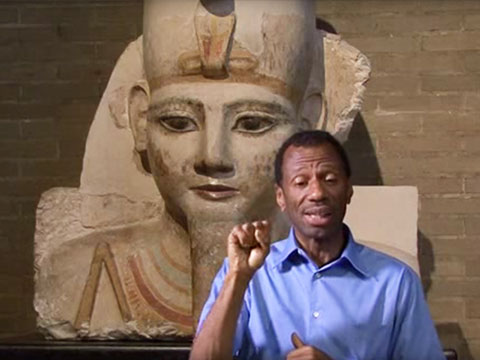
Length: 02:18
Colossal Head of Ramses II from Abydos Egypt (1290-1224 BCE)
Head of a Colossal Statue of Ramses II, Abydos, Dynasty 19, Reign of Ramses II (1290-1224 BCE), Limestone (restored), Penn Museum Object 69-29-1. Depicted here is the bust one of a series of colossal figures that originally decorated the front of...
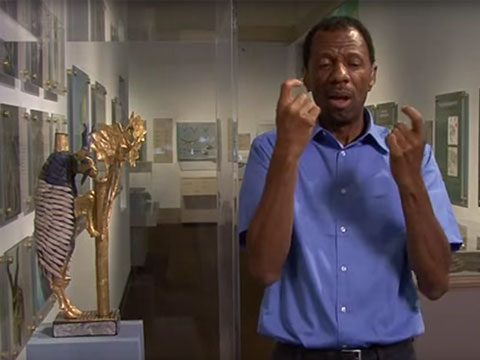
Length: 01:23
Ram Caught in a Thicket from Ur
This goat standing upright against a flowering plant and its counterpart in the British Museum are two of the most famous objects from the Royal Cemetery of Ur. They have frequently been referred to as the Ram Caught in a Thicket because the biblical...
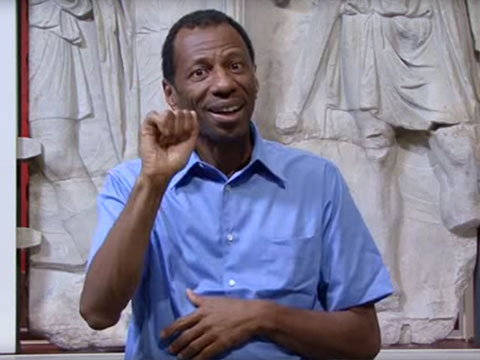
Length: 02:06
The Puteoli Marble Block (102 CE)
Dominating the new Roman World gallery is an internationally famous military relief, once part of a commemorative arch for the emperor Trajan, erected in 102 CE at ancient Puteoli near Naples. This monumental sculpture is also a prime example of Roma...
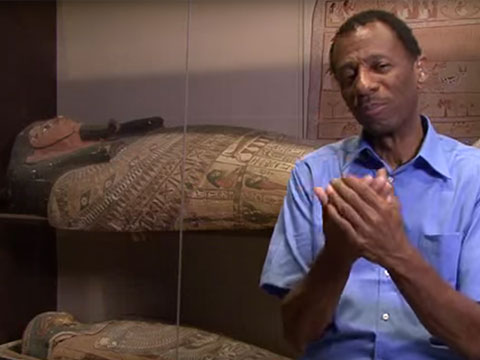
Length: 04:39
Egyptian Mummies
This popular Museum exhibition features human and animal mummies, tomb artifacts, and objects and materials used in the mummification process. It offers an in-depth look at the ancient Egyptian beliefs in the afterlife, and the complex funerary pract...
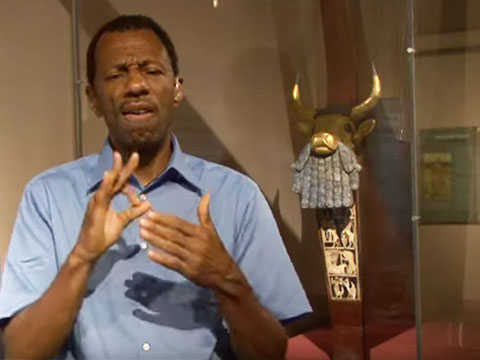
Length: 01:47
The Bull-headed Lyre from Ur
Lyre with Bearded Bull's Head and Inlaid Panel, Royal Cemetery, Ur, Iraq, Early Dynastic III, 2550-2450 BCE, Wood, lapis lazuli, gold, silver, shell, bitumen, H. 35.6 cm. Penn Museum Object B17694....
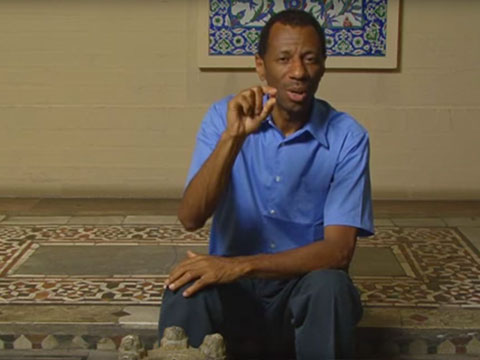
Length: 02:46
The Islamic Near East
The objects in this gallery come from the central lands of the Islamic world: Iraq, Iran, Syria, Turkey and Egypt. These are the very regions where the more ancient cultures of Sumer and Assyria, of Pharaonic Egypt, of Neolithic and Bronze Age Iran, ...
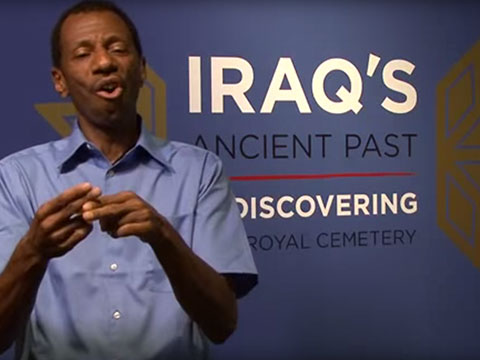
Length: 02:44
Iraq's Ancient Past
In 1922—the same year that Howard Carter shocked the world with his discovery of Tutankhamen's tomb in Egypt—a little-known British archaeologist, Charles Leonard Woolley, began excavations near the town of Nasiriyah at the site of Ur—one of an...
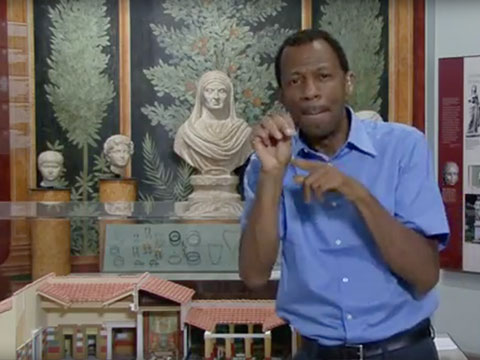
Length: 01:23
Model of a Roman House
The centerpiece of the Rome Gallery is a 4 ft. x 2 ft. model of a Roman house of the type excavated at Pompeii and Herculaneum. Visitors can learn about Vitruvius, a famous Roman architect, and his variations in housing design....
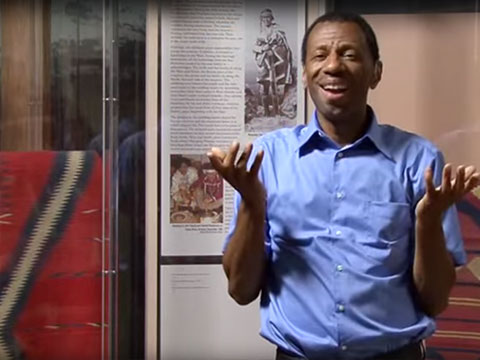
Length: 01:52
The Navajo Hooghan
In the American Southwest Exhibition, visitors can stand inside a Navajo Hooghan. The "hooghan" (house) framework encloses objects which relate to the different kinds of knowledge the Navajo believe reside in mountains in the four sacred directions....

Length: 01:51
Greece
The Greeks were the pre-eminent merchants of the Mediterranean world. Even in the Bronze Age their commercial contacts reached to Egypt and the Near East. During the height of Greek civilization their city-states dominated the economy of the entire M...
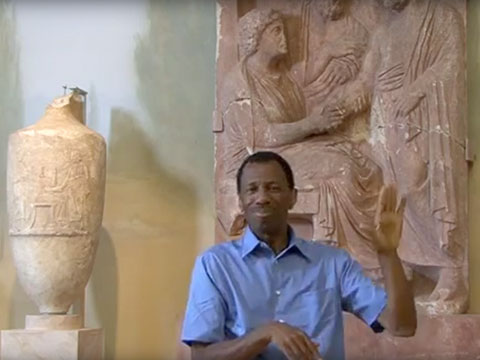
Length: 01:50
Greek Grave Stela
The design of this Greek grave relief is common for the Classical period of the 5th and 4th centuries BCE. Find out who the people are carved on this grave marker....
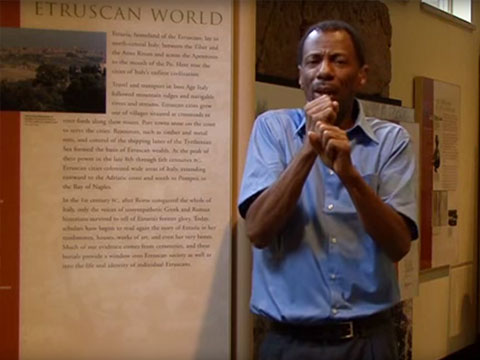
Length: 02:05
Etruscan Italy
The Etruscans dominated the central part of the Italic peninsula during the late 8th through the 6th centuries BCE. Their economy depended largely on trade, and their commercial contacts favored the Greek colonies in Southern Italy and Sicily. They i...
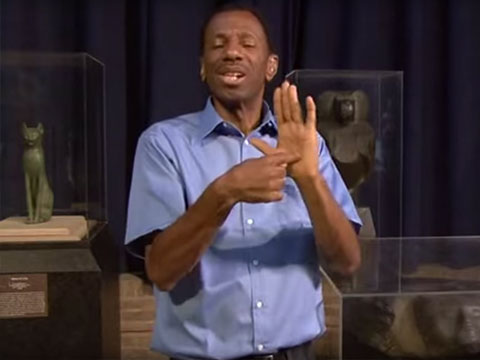
Length: 02:00
Egyptian Door Socket
This door socket is from Hierakonpolis in southern Egypt, an important place because its rulers became some of the first pharaohs around 3000 BCE. This door socket would have been part of a long row of bound enemies who formed a door threshold....

Length: 00:55
Closing Credits
We hope you enjoyed the tour. Please come and visit us in person in Philadelphia! This ASL video tour was made in loving memory of Jason Stefaniuk....

Length: 01:19
Sarcophagus from Canaan (ca. 1250-1150 BCE)
At Beth Shean, fragments of fifty clay sarcophagi were found in reused Early Bronze Age tombs. These sarcophagi date from the last phase of the Egyptian empire in Canaan (ca. 1250-1150 BCE). The lids of these sarcophagi depict faces and upper torsos....

Length: 00:45
Egyptian Mummy of a Child (ca. 1CE)
This is an example of a mummy of a young boy from the Roman period in Egypt about 2,000 years ago. We are uncertain how he died. A current project here at the Penn Museum involves the CAT-scanning of all of our mummies at the Hospital of the Universi...
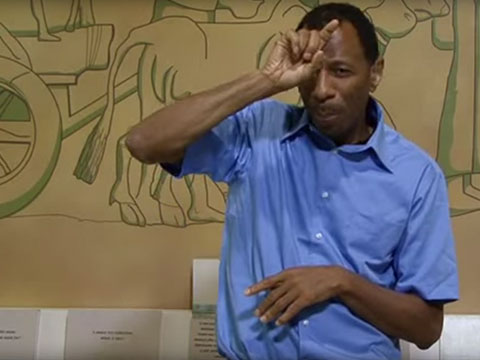
Length: 02:07
Canaan and Israel
The Penn Museum holds nearly 25,000 artifacts from excavations in the Levant, a geographical area that encompasses modern Israel, the West Bank and Gaza, Jordan and Lebanon, as well as adjacent parts of Syria. Penn Museum's holdings represent the lar...

Length: 02:57
Buddhist Asia
The exhibit Buddhism: History and Diversity of a Great Tradition, currently on display in the Museum's Pepper Hall, traces Buddhism from its origins in India through its development along ancient land and sea routes leading into central Asia, and flo...

Length: 01:37
Statue of Avalokitesvara from 18th Century Tibet
Statue of Avalokitesvara, Tibet, 18th Century, Brass, H. 53 cm. Penn Museum Object 85-28-5....

Length: 01:48
Attic Black Amphora from ca. 540-530 BCE
One of the most important objects in the gallery is the large amphora of c. 540-530 BCE decorated with scenes from the Trojan War. Found in a tomb in Orvieto, Italy, it was painted by the well-known Athenian artist Exekias....

